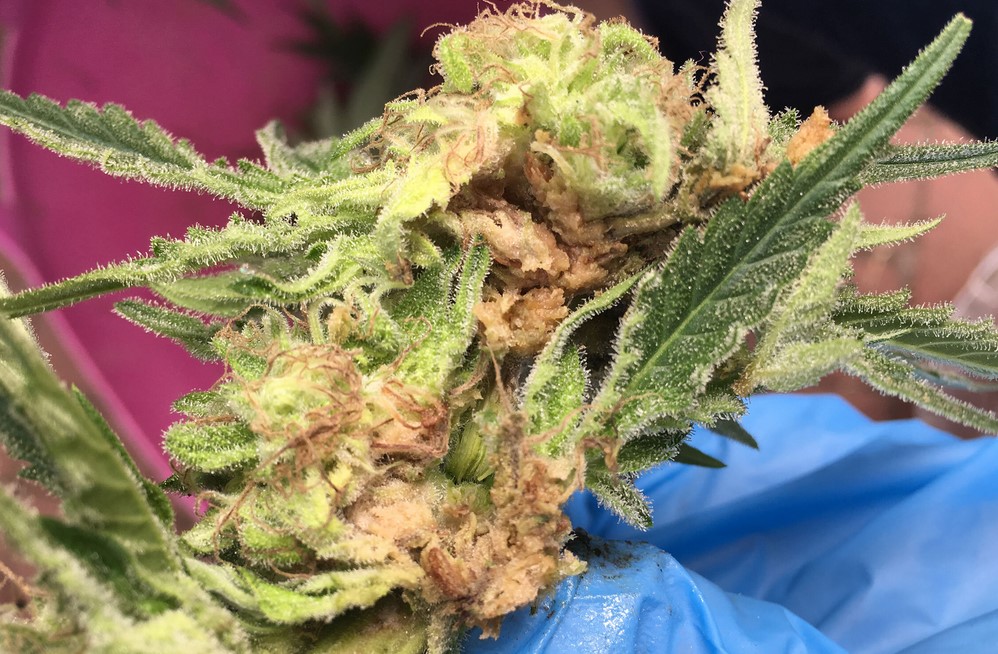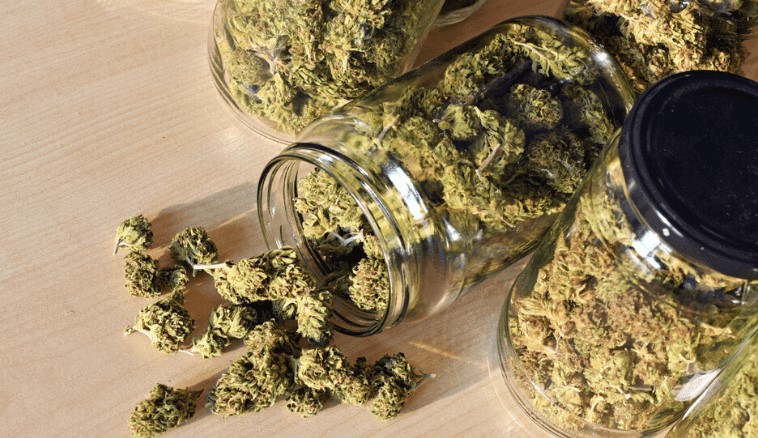Uncategorized
About Moldy Weed
The severity of the dilemma is indisputable – moldy cannabis could potentially be fatal. In February 2017, The Sacramento Bee published a study which highlighted this issue. Researchers from UC Davis uncovered hazardous bacteria and mold on samples collected from twenty dispensaries and weed growers in Northern California, thus illustrating the importance of safe handling procedures for cannabis products.
The long-term effects of consuming moldy marijuana are largely unknown; yet, it can be particularly dangerous for those whose immune system is already weakened. People with chronic illnesses such as AIDS or leukemia may experience life-threatening lung infections due to smoking contaminated cannabis products. Unfortunately, two fatalities have been reported in relation to the consumption of tainted weed so far.
For many individuals, it can be difficult to tell the difference between good and bad marijuana. This guide is here to help you recognize hazardous mold from healthy cannabis so that you never have to worry about inhaling harmful bacteria again!
What’s the Problem with Mold on Cannabis?
The difficulty lies in the fact that good and contaminated marijuana can look so alike! For those who have only ever smoked mids, this isn’t going to be a problem. However, high-grade buds are riddled with milky white trichomes which give your cannabis its signature potency. The dilemma is that moldy weed also appears pale on first inspection. Even if your bud is infected by powdery mildew, it will still show off an abundance of tiny opaque specks – making it hard for newcomers to differentiate between both types of weed.
Although some of the chemicals in cannabis are naturally fungicidal, its dense structure makes certain strains more vulnerable to infection. Specifically, Kush tends to be a breeding ground for mold and mildew growth. As such, any hybrid containing Kush is also prone to this problem. Common pathogens found on marijuana include…
- Cladosporium
- Aspergillus
- Fusarium
- White Mold
With around ninety species of fungi attacking cannabis plants, it is essential to be aware that mold spores are exceptionally resilient. Even when heated in an oven or lit up in a joint or bowl, they can still survive. When smoking infected marijuana, the spores pass directly into your lungs and could cause severe harm.
Notorious molds such as Aspergillus have the potential to release hazardous mycotoxins in your environment, including carcinogens like Aflatoxin and Ochratoxin. Over time, prolonged exposure to these toxins can cause an array of health issues ranging from coughing and nausea to asthma and serious lung irritation. Therefore it’s essential that you proactively take steps to identify any mold presence before it has a chance to put your wellbeing at risk.

How to Differentiate Mold from Trichomes Using Your Five Senses
Sight
On the surface, the difference between high-quality and moldy weed may be indiscernible. However, if you take a closer look with a magnifying glass, it becomes easier to spot trichomes—which appear as crystal or milky white mushroom heads on your bud. By inspecting more carefully through this lens of discernment, you can easily tell them apart without fail.
Looking closely, one can observe that the trichomes covering the buds resemble a glowing spotlight.
Compared to fresh cannabis, moldy weed appears aged and worn. The type of mold that grows on marijuana is similar in nature to the fungi you would find forming on spoiled fruits or vegetables. Utilizing bright light or a magnifying glass can help identify white, brown, green, gray, or black fuzz resembling small hairs. Alternatively described as spider webs or white cotton candy-like material – spores are visible indicators of past-prime pot.
Smell
If you’re confused about which strain of weed to get based on its smell, don’t worry! Terpenes are the natural compounds that give cannabis unique fragrances like citrus, spice, pine and fruit. Do a bit of research beforehand so that you know what scent you should anticipate for each type of strain. Plus if your sense of smell is good-which it almost certainly is-you will be able to recognize moldy weed by its odor instantly!
The scent of mold can be likened to the earthy aroma of weed, making it difficult for those inexperienced in smoking to differentiate between them. If your marijuana emits an odour similar to damp laundry, there’s a possibility that it has spoiled. A overwhelmingly sweet smell alongside a musty and dank one indicates too much moisture content – this is indicative that your cannabis has gone bad.
Touch
High-grade cannabis is characterized by easily pullable nugs, and that should be your benchmark for quality in the future. On the other hand, low-quality weed tends to have compressed and crumbly buds – so if you trust your source but don’t feel like it’s quite up to par, then chances are it isn’t a premium product.
Sound
Believe it or not, you can even use your ears to determine if marijuana is of a high-quality. If the buds are dried and cured properly, they will make an audible ‘snap’ when broken apart. This crisp sound signifies that there is low moisture content in the cannabis – which would be indicative of its quality!
If it’s hard to detach the buds and they don’t much noise when breaking them off, chances are there is a considerable moisture content. This signals that this marijuana was not dried properly, which can significantly raise the odds of mold development.
Taste
To save yourself the hassle, you should be able to identify moldy weed before even taking a ‘taste test.’ If need be, it would then become straightforward to distinguish between high-grade cannabis and Mexican brick weed.
Good quality marijuana offers a smooth and easy feeling. Bad cannabis tastes harsh and hits you with coughing fits.
Unless it’s Strawberry Cough, the kind that induces coughing as soon as you smoke it, then any other weed is not worth your time.
Final Thoughts
To ensure your cannabis can stay fresh for several months, the weed must be adequately dried and cured. Start by allowing the marijuana to hang upside down for a few days until dryness is achieved before packing it in sealed glass jars. When this process is done correctly, stored cannabis will maintain its potency up to six months or even longer!
Unfortunately, due to the absence of uniform testing standards, there exists a great disparity in the quality of marijuana being sold from region to region and even within one state. Inadequate drying or curing can cause mold formation on your buds which is especially detrimental for people with weak immune systems as it may be deadly when smoked. To ensure you always get high-grade weed, make sure you research marijuana standards in your area before purchasing any product!
Taking a risk with your health isn’t exclusive to Vegas; buying from an untested marijuana dispensary can be just as hazardous. To ensure optimal safety, choose brands that have undergone rigorous testing for mold and pathogens in their products before you purchase them. Take the necessary precautions now so you won’t regret it later!


